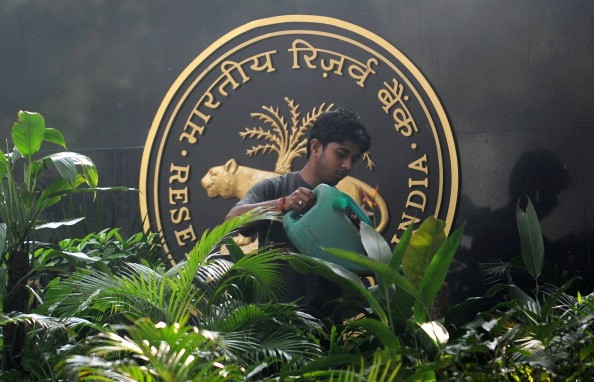The emerging market economy of Hungary
Post on: 16 Март, 2015 No Comment

“An emerging market economy is defined as an economy with low to middle per capita income. Such countries constitute approximately 80% of global population, and represent about 20% of world’s economies.1” these all emerging markets are all of those nations where social and business activities are in the quick process and growing rapidly and running fast towards industrialization. There are more than 40 emerging markets in the world including India, China, Kenya, Mexico, Poland, Russia, South Korea, Egypt, Brazil, Philippines, Indonesia, and South Africa. In these economies India and China are considered as the largest emerging markets. We can believe that Hungary is not among the biggest emerging markets but still FTSE Group list, MSCI list, S&P list, Dow Jones list and also some economists are considering Hungary as an emerging economy. There are many distinguishing features of emerging economies such as lower overall political and economic stability, faster change, increased risk, underdeveloped infrastructure, underdeveloped rule of law and higher economic growth rate.
BACKGROUND OF HUNGARY
Hungary is the country in central Europe having 93,030 sq.km. of area with temperate climate. As of 2010 it has population of 10,011,000 made of different ethnic groups including Magyar 89.9%, Romany 4%(est.), German 2.6%, Serb 2%, Slovak 0.8%, Romanian 0.7% having different religions. Hungary is a republic country made of administrative regions of 19 counties plus capital region of Budapest. More than 95% of the population is using Hungarian language as their mother tongue. “Hungary became a fully fledged member of NATO in 1999 and, with nine so-called accession countries, was admitted into the EU in May 2004. In June 2005 parliament elected László Sólyom, a law professor and founding member of the MDF, as the third president of the republic to succeed the outgoing Ferenc Mádl2”.
_________
www.investopedia.com/articles/03/073003.asp
www.lonelyplanet.com/hungary/history
Hungary is enjoying high economic growth since 2004 and 80% of its GDP is from private sector. Hungary enjoys freedom in its monetary, fiscal, business, investment, labor and trade factors strongly.
Pal Schmitt is a president since 6 August 2010 and Viktor Orban is a prime minister since 29 may 2010 of Hungary. As a republic country, Prime Minister is considered as head of the country.
KEY ECONOMIC INDICATORS OF HUNGARY
The economy of Hungary is medium sized by its structure, politics and institution. It is an open economy in Central Europe and also it is a part of European Union single market. Hungary is a member of the Organization for Economic Co-operation and Development, European Union and World Trade Organization. Hungary has applied privatization since January 1990, by established State Privatization Agency. Since 1995, Hungary had high trade deficit due to high demand in import goods. In the year 2009, the economy of Hungary contracted by 6.3% due to global economic downturn, low domestic consumption, fixed asset accumulation and reduction in exports and global financial crisis. “To respond to the crisis, the Bajnai government in 2009 enacted a series of economic reforms and spending cuts intended to reduce the tax burden on labor, encourage employment, improve Hungary’s economic competitiveness, and offset lost government revenue due to the deeper-than-expected recession. These measures included reforms to the pension and entitlement systems, as well as tax changes to shift the tax burden from labor to wealth and consumption. In addition to cuts in taxes for businesses and employees, tax changes included raising the value added tax (VAT), and a proposal for the introduction of a property tax. In 2009 GDP declined by 6.3%, and the Hungarian Government was able to meet the 3.9% deficit target.
The Orban government elected in 2010 has pledged to meet the 3.8% budget deficit target and launched a 29-point economic program designed to promote growth by reducing administrative burdens on businesses and lowering the tax burdens on small businesses. The plan also includes strict control of budgetary expenditures, and a tax on the financial sector of HUF 200 billion (about $850 million), which would remain in effect for 2 years4”.
“The labor force of Hungary in the year 2010 was 4.17 million 85th rank in the world5”. From which 4.5% are engaged in Agriculture sector, 32.1% are engaged in Industry sector and rest 63.4% are engaged in service sector. The unemployment rate of Hungary was 11.5% in the year 2010 and was ranked at 124 in the world.
Main agriculture products of Hungary are wheat, potatoes, sugar beets, sunflower seed, corn, and also poultry, pigs, cattle, dairy products. Industrial sector mainly include, mining, metallurgy, construction materials, processed foods, textiles, chemicals (especially pharmaceuticals), motor vehicles6.
INFRASTRUCTURE

Electricity: Hungary is the largest electronics producer in the CEE region providing 30% of regional output. The electronics industry is the largest industrial sector in Hungary accounting for 25% of total manufacturing production and the production growth between 2000-2008 amounted to 80% in the electronics industry7.
Transportation: Hungary is enjoying grate transportation facility with 43 airports (22 with paved runways and 21 with unpaved runways), 5 heliports, 9,208 km railways, 197,519 km roadways, 1,622 km waterways and also pipelines 4,407 for gas, 987 for oil, 335 km for refined products (2010 est.)8.
IT and Telecommunications: Hungary is enjoying extensive and high quality telecoms network. The telecoms market is most attractive market by having presence of many strategic investors in this market. In Hungary it is very easy to use readily available standard telecom infrastructure from Europe for mobile fixed line and internet coverage.
There are almost 250 internet providers in Hungary out of them T-Mobile, Enternet, Tvnet, Pan Tel, UPC, Freestart, Invitel, GTSD Datanet, Euroweb and Inet.net are the major providers of internet in Hungary.
FOREIGN TRADE OF HUNGARY
Hungary is enjoying most favorable foreign trade as it is a member of the World Trade Organization and European Union since 2004. It has very active and open economic policy which resulted in almost 70% of its GDP from its export. Hungary is located in the center which allows it to have benefits of convenient trade with the countries in the East and the West. “The dynamic growth of exports in the past decade was mainly due to the settlement of multinational companies in Hungary. Over 70 percent of the country’s exports are produced by partly or fully foreign-owned companies. Substantial foreign investment had flown into Hungary, and the mid-90s witnessed massive export drive. The turnover of foreign trade increased annually around 20%. The growth rate of exports and imports slowed down in 2007 (6%) while in 2008 it reached only 3.4% due to the crisis. Export is expected to decline in 2009 due to the economic downturn in destination markets especially in Germany. The country’s export includes machinery and equipment 61.1%, other manufactures 28.7%, food products 6.5%, raw materials 2% and fuel and electricity 1.6% (2009 est.) Country’s import includes machinery and equipment 50%, fuels and electricity 11%, food products and raw materials9”.
FOREIGN INVESTMENT IN HUNGARY
In the year 1995-96, the government of Hungary adopted a stringent economic reform program of liberalization and privatization. Hungary has five free trade zones in which corporations are treated as foreign and are exempt from custom duties and taxes. “In the period 1988 to 1990, Hungary’s share of world FDI inward flows was five and a half times its share in world GDP, the sixth-largest ratio in the world. Annual foreign direct investment (FDI) inflows into Hungary reached a peak in 1995 at about $4.5 billion, from which point they declined steadily until 2001, when there was an upswing to $2.4 billion from $1.6 billion in 2000. In 2002, FDI inflow fell to less than $1.5 billion. The average FDI inflow from 1998 to 2001 was about $2 billion a year. For the period 1998 to 2000, Hungary’s share of FDI inflows was about equal to its share of world GDP. Total FDI stock, from 1989 to 2002, is estimated at about $34 billion. The largest single source of foreign investment has been the United States, followed by Germany, the Netherlands, Austria, the United Kingdom, and France10”.














